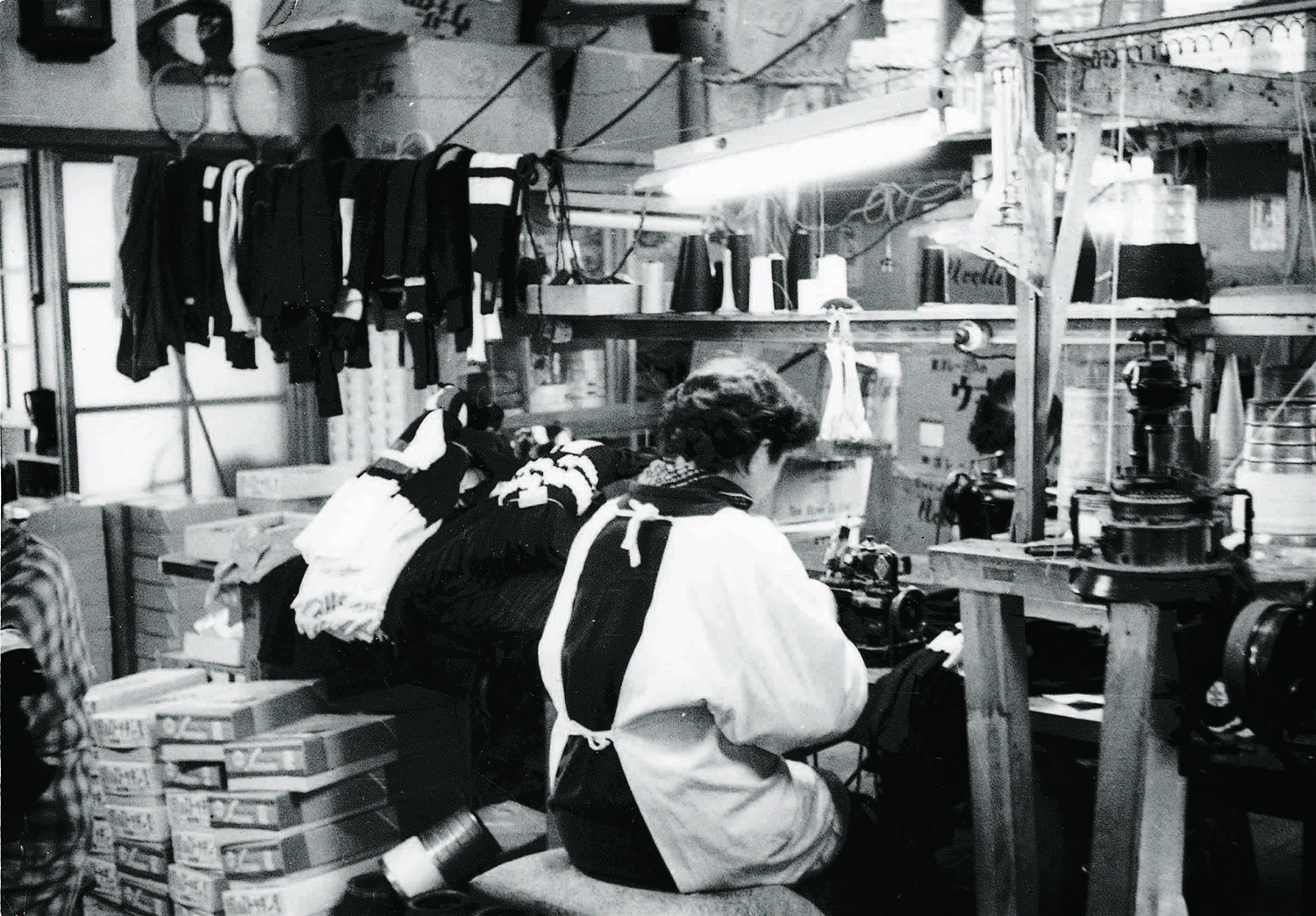 Craftsmanship
Craftsmanship
Craftsmanship
Craftsmanship
創業当時のものづくり
Craftsmanship当時使用していた機械には、国産の横編み機や丸編み機などがあった。丸編み機は筒状にニット生地の布を編む機械であり、帽子やソックスなどはこの機械で作られていた。横編み機はリブニットを横方向に編んでいく機械だ。当時は、仕上げはミシンやアイロンを使用し手作業を施すのが主流だった。「誰が一番に仕上げられるか競い合ったりしていたよ。手先が器用だから、いつも作業が早いのは女性だった。」と一生懸命に働きながらも、和気藹々と作業をしていた様子を当時の社員は振り返る。機械はよく故障し、修理に手間を取られることもしばしば。24時間稼働しっぱなしの機械からは目を離せず、当時の従業員はシフト制で夜中も働いていたという。とにかくいい製品を生み出すため、西田は社員と共に日々技術の模索をし、製品やデザインの改良、素材の研究など、クオリティーをとことん追求し続けた。当時から、とにかくひたむきなものづくりの精神で製品と向き合っており、それは現在にも受け継がれている。1952年、創業3年目にして西田はスポーツウエアに転進することを決意する。今となっては人々の生活の中に溶け込んでいるスポーツだが、この頃はまだ、多くの日本人にはスポーツを楽しむ余裕がなく、いわゆる“道楽息子”のみが楽しむものだった。しかし西田は戦後の厳しい状況を経験し、そして立ち直っていく日本を見て、近い将来スポーツはメジャーになるだろうと予測したのだ。それと同時に、「明るい未来をスポーツに託したのだ」と現社長、西田明男は話す。彼には先見性もあっただろう。しかし先を見据えていたというよりも、二度と戦争を起こすような社会になってほしくないと願い、健康かつ安心安全な社会をつくることに目を向けていた。そして何より、平和を永続する国づくりはルールの中で最善を尽くし、フェアに競い合うスポーツと一緒にできるであろうと考えたのだ。
At the time of founding, they used flat knitting machines and circular knitting machines domestically produced. A circular knitting machine is a machine for knitting a cloth of knitted fabric in a tubular form, and hats, socks and the like were manufactured with this machine. A flat knitting machine is a machine for knitting rib knit in a horizontal direction. At that time, the finishing process was mostly done manually using sewing machines and irons. “We used to compete with one another to see who could finish first. Women were always faster workers because they were skillful with their fingers.” The employees of those days look back on the days they worked hard in the atmosphere of happy harmony. The machines often broke down, and it often took a lot of time and labor to repair. Someone had to keep an eye on the machines that operated 24 hours a day, and the employees at the time worked all night by taking shifts. In order to create good products, Nishida groped for the technology every day with his employees and pursued the quality to the end, improving products and designs, researching materials, and so on. From those days, he gave his full attention to his products with dedicated spirit of manufacturing and his spirit has been handed down to the present. In 1952, in the third year of foundation, Nishida decided to shift the direction of his business to make sportswear. Today, people enjoy sports as a usual part of everyday life, but in those days, many Japanese still could not afford to enjoy sports, so it was something that only so-called “spoiled son” would enjoy sports. Having experienced the harsh situation after the war, and seeing Japan bouncing back, however, Nishida foresaw that sports would become the mainstream in the near future. At the same time, according to the current president, Akio Nishida, “he pinned a bright future on sports.” He must have had foresight, too. Actually, he did not look ahead into the future as much as he looked to creating a healthy, safe and secure society, hoping Japan would never initiate another war again. And more than anything, he thought that building a country with stable peace would go hand in hand with sports where people would do their best in the rules and play fair.